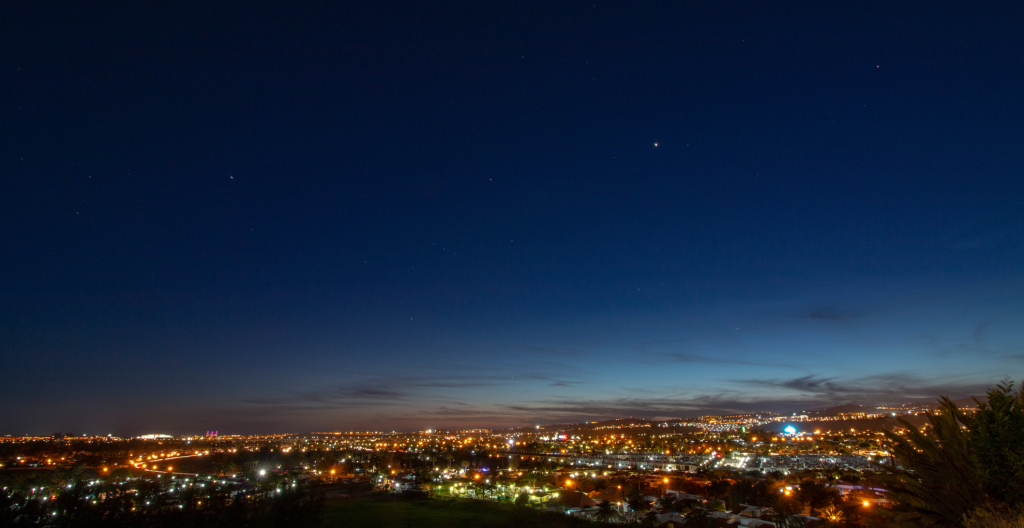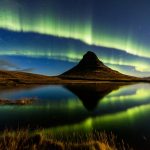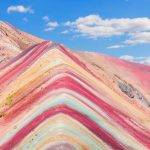Table of Contents
After traveling to the world’s most remote locations in search of perfect dark skies, I’ve discovered the true stargazing gems that go beyond typical tourist recommendations. Here’s your comprehensive guide to finding the clearest views of our cosmos and best destinations for stargazing – from high-altitude deserts to remote islands.
The Tassili Experience
Algeria’s Tassili n’Ajjer National Park offers some of Africa’s most pristine dark skies, with its high-altitude desert plateau creating perfect viewing conditions. The park’s remote location, far from any major cities, ensures virtually zero light pollution. The dramatic rock formations create natural observation platforms at elevations reaching 2,000 meters. The best viewing occurs between October and March when the skies are at their clearest and temperatures are moderate.
Local Tuareg guides share ancient astronomical knowledge passed down through generations. The area’s rich archaeological heritage, including prehistoric rock art depicting celestial objects, adds a unique cultural dimension to stargazing experiences. Book guided tours well in advance as access to the park is strictly regulated. The extreme desert conditions require careful preparation – bring warm clothing as temperatures can drop significantly at night.
The Atacama Experience
Chile’s Atacama Desert offers the world’s clearest skies, with over 300 clear nights annually. The small town of San Pedro de Atacama serves as the perfect base, sitting at 2,400 meters above sea level. Professional observatories like ALMA offer visitor sessions, but smaller local observatories provide more intimate experiences. Stay at least three nights to account for weather variations. The best viewing occurs between April and September when skies are consistently clear and temperatures are manageable.
Local astronomical guides can explain both Western constellations and indigenous Andean star lore. Book accommodation at least 10 km from town to avoid light pollution. Many hotels offer observation decks and telescopes. The high altitude requires acclimatization – spend your first day adjusting before nighttime observation sessions.
The Namibian Desert Skies
NamibRand Nature Reserve, Africa’s first International Dark Sky Reserve, offers unparalleled views of the southern hemisphere’s stars. The lodge at Sossusvlei Desert Lodge features a professional observatory and resident astronomer. The dry winter months (May to October) provide the clearest skies, with virtually zero light pollution across millions of acres.
Visit during new moon phases for optimal viewing. The desert’s elevation and clear air create perfect conditions for seeing the Magellanic Clouds and the center of the Milky Way. Local guides combine stargazing with traditional Namibian stories about the night sky. Book night photography workshops to capture the stunning desert-and-stars landscapes.
The Mauna Kea Summit
Hawaii’s Mauna Kea presents unique opportunities to stargaze from above the clouds at 4,200 meters. The visitor center at 2,800 meters offers free nightly stargazing programs with telescope access. For serious astronomers, organized summit tours provide access to professional telescope facilities. The dry air and minimal atmospheric interference create exceptional viewing conditions.
Acclimatize at sea level for at least 24 hours before ascending. Book tours that include both sunset and stargazing experiences. The best viewing occurs during winter months when air clarity peaks. Prepare for extreme temperature changes – the summit can drop below freezing after sunset.
The New Zealand Dark Sky Experience
The Aoraki Mackenzie Dark Sky Reserve in New Zealand’s South Island offers the southern hemisphere’s largest dark sky preserve. Mount Cook Village provides excellent accommodation options with minimal light pollution. The University of Canterbury’s Mount John Observatory offers night tours with professional astronomers.
Visit between March and September for the clearest skies and potential aurora australis sightings. Local Maori guides share traditional celestial navigation stories. Many accommodations feature glass roofs for in-bed stargazing. The area’s strict lighting ordinances ensure optimal viewing conditions year-round.
The Icelandic Aurora Zone
Iceland’s remote northern regions offer perfect conditions for both stargazing and aurora viewing. The Hotel Rangá in South Iceland features an observatory with a retractable roof. Winter months provide up to 19 hours of darkness, maximizing viewing opportunities. September to March offers the best chances for aurora sightings.
Book accommodations with Aurora wake-up calls. Combine stargazing with glacier tours and hot spring visits. Local photographers offer specialized Northern Lights photography workshops. The country’s sparse population means minimal light pollution outside Reykjavík.
The Mongolian Steppes
Mongolia’s Gobi Desert provides vast open skies unmarred by artificial light. Traditional ger camps offer authentic accommodation with modern astronomical equipment. The best viewing occurs between June and September when weather conditions are optimal. Local guides combine astronomy with traditional Mongolian celestial mythology.
Stay in camps at least 100 km from major settlements. Many tours include both astronomical observation and cultural experiences. The elevation and dry air create perfect viewing conditions. Some camps offer photography equipment rental for night sky shooting.
The Australian Outback
The Outback town of Broken Hill offers exceptional dark sky viewing. The Outback Astronomy site provides guided tours with both aboriginal and scientific perspectives. Summer months (December-February) offer the clearest skies, though temperatures can be extreme.
Local astronomical societies host regular public viewing events. Many stations (ranches) offer dark-sky accommodation experiences. The area’s minimal rainfall and low humidity create ideal viewing conditions year-round. Book tours that combine stargazing with traditional aboriginal dreamtime stories.

The Canary Islands Experience
Tenerife’s Teide National Park, home to Europe’s largest solar observatory, offers exceptional night sky viewing. The park’s elevation (3,555 meters) places viewers above the cloud line. Special permits allow overnight stays near the summit for optimal viewing. Professional observatories offer public night sessions.
Visit during the summer months for the most reliable weather conditions. Book accommodations in mountain villages to avoid coastal cloud cover. Many local companies combine stargazing with volcano tours. The islands’ strict light pollution laws protect viewing conditions.
The Moroccan Desert
The Sahara Desert near Merzouga offers pristine dark skies and traditional Berber astronomical knowledge. Luxury desert camps provide comfortable viewing conditions with professional equipment. The best viewing occurs between October and March when temperatures are moderate and the skies are clearest.
Combine stargazing with traditional desert experiences. Many camps offer astronomy-focused stays with expert guides. The absolute darkness and elevation create perfect viewing conditions. Local guides share ancient navigation techniques used by desert travelers.
The Canadian Dark Sky Preserves
Jasper National Park, the world’s largest accessible dark sky preserve, offers year-round viewing opportunities. The Jasper Dark Sky Festival in October features special programming and expert talks. Winter months provide extended viewing hours, though temperatures require serious preparation.
Book accommodation within the park for the easiest access to dark-sky sites. Many locations offer heated viewing areas during winter. Local astronomers provide regular guided viewing sessions. The park’s strict lighting policies maintain optimal viewing conditions.
Making It Work: Best Destinations for Stargazing
Successful stargazing requires patience, proper planning, and respect for local environments. Always check moon phases, weather forecasts, and seasonal conditions when planning your trip. Ready to explore the universe from Earth’s best vantage points?

I’m Garrett, a seasoned photojournalist with a passion for uncovering the world’s hidden treasures. My journey is fueled by a deep curiosity for diverse cultures and breathtaking landscapes. When I’m not behind the lens capturing the world’s wonders, you can find me exploring underwater realms or sharing my passion for discovery with my two adventurous children.




